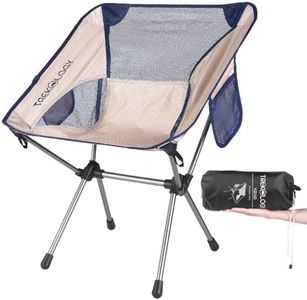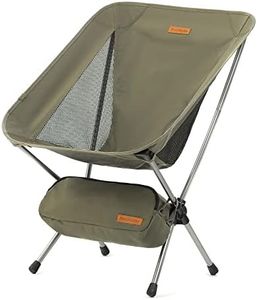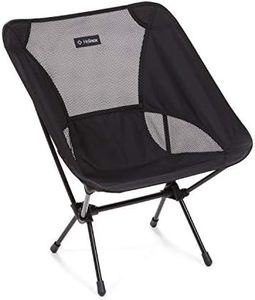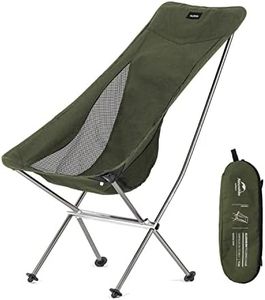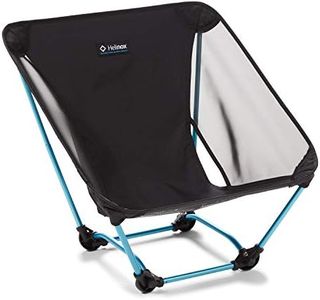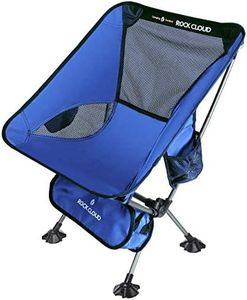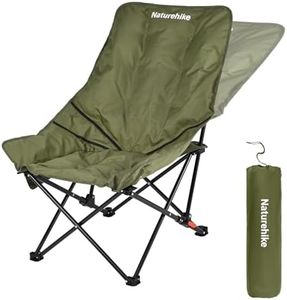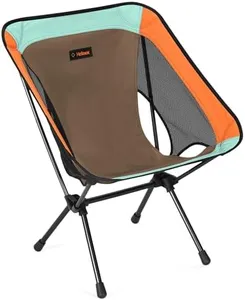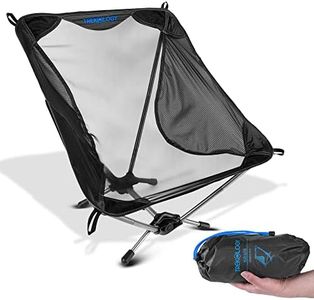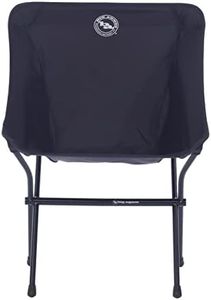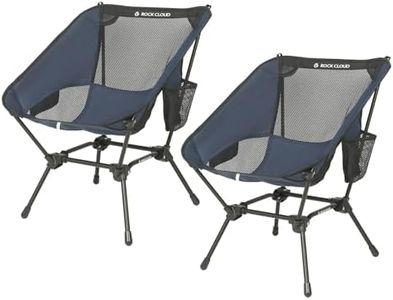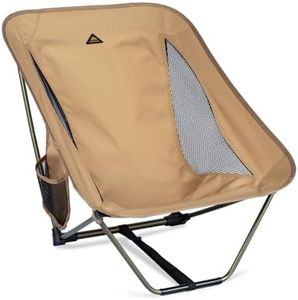We Use CookiesWe use cookies to enhance the security, performance,
functionality and for analytical and promotional activities. By continuing to browse this site you
are agreeing to our privacy policy
10 Best Ultralight Backpacking Chair
From leading brands and best sellers available on the web.Buying Guide for the Best Ultralight Backpacking Chair
Choosing an ultralight backpacking chair is about balancing comfort with weight and packability. Since you're likely carrying everything on your back, every ounce matters. The chair you pick should be easy to carry, quick to set up, and comfortable enough for your needs after a long day of hiking. Think about the conditions you'll face, how much weight you're willing to add to your pack, and what level of comfort or convenience is important to you.WeightWeight refers to how heavy the chair is when packed. This is a crucial spec for ultralight backpacking because every ounce in your backpack adds up on the trail. Generally, chairs come in ranges: under 1 pound is considered extremely light and suits those who want to keep pack weight to an absolute minimum, though comfort may be basic. Around 1–2 pounds is a common balance, offering a tad more support and features without being too heavy. Anything above 2 pounds might offer more comfort but could be less appealing for long-distance hikes. Pick a weight that aligns with how much you're comfortable carrying over miles of hiking.
Packed SizePacked size means how small the chair gets when it's folded and stored in its carrying bag. This matters because it affects how much space the chair will take up in your backpack or attached to the outside. Smaller packed sizes are easier to fit into your gear, especially if you have a compact backpack. Chairs that pack down to the size of a water bottle are best for space-conscious hikers. Larger packed sizes may offer more seating area but could compete with other essentials for space. Consider how much dedicated space you can allow for a chair, given your other gear.
Seat Height and ComfortSeat height is how far the seat is off the ground, and overall comfort refers to the shape, width, and material of the seat. Ultralight chairs usually have a lower seat height to save weight, often 5 to 12 inches above ground. Lower seats can be more compact but may be harder to get in and out of, especially if you have knee or mobility concerns. Higher seat heights are easier to use but often weigh more. Also, look for seat shape and width—the more generous, the more comfortable you'll be, but the heavier the chair could get. Match the chair’s comfort level to your expectations after a day of hiking: do you just want a break from sitting on the ground, or do you want real back support?
Frame MaterialFrame material describes what the chair's supporting structure is made from—typically aluminum alloys for ultralight models. Aluminum balances lightness, strength, and durability. Cheaper chairs may use heavier steel, while high-end models might use space-age alloys. Lighter frames are ideal for backpacking, but make sure the material is sturdy enough for your weight and intended usage frequency. If you’re planning many trips, investing in a stronger material makes sense.
Weight CapacityWeight capacity tells you the maximum body weight the chair can safely support. This is important to ensure the chair doesn't break or deform during use. Most ultralight chairs have capacities between 200 and 320 pounds. Choose a chair with a weight rating that’s comfortably above your own weight, especially if you expect to sit with a loaded backpack or for longer periods, to ensure durability and safety.
Stability and DesignStability refers to how well the chair stays upright on uneven or soft ground, and the general design affects how easy it is to set up and how safe you feel sitting in it. Chairs with wider feet or bases are less likely to sink or tip over, which is crucial if you're camping on dirt, sand, or grass. Some chairs have cross-bracing or lower profiles for extra stability. Evaluate where you’ll mostly use the chair—if it’s rocky or sandy, prioritize stability and anti-sink feet. Also, check how simple the assembly process is, especially if you'll be setting up after a tiring hike.
